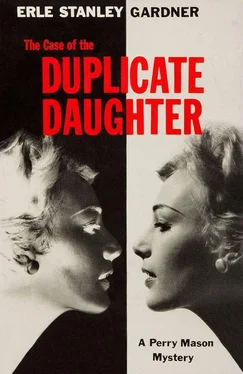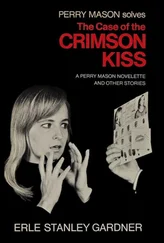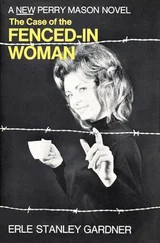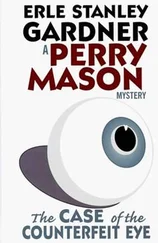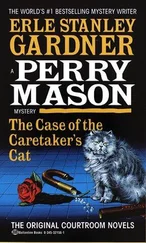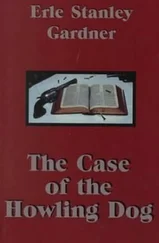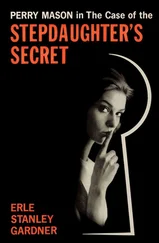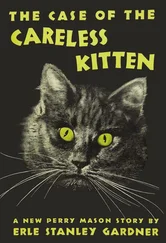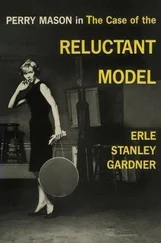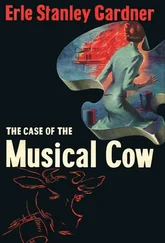“Cross-examine,” Deering said.
Mason shook his head. “No questions on cross-examination, Your Honor.”
Deering said, “Call Carlos Barbara.”
Barbara testified that he dealt in rare woods for cabinet-workers, that he had recently evolved the process by which a certain chemical dye which he had invented could be utilized to stain a certain type of mahogany. The process was, he said, secret. The wood was seasoned in a certain manner and at a certain time the dye was introduced under pressure. It was a process that no other dealer had duplicated and he had had it perfected on a commercial basis for less than three months.
Deering asked him if his books indicated persons to whom that mahogany had been sold and Barbara stated that he had not sold any of the mahogany, that he had given three people samples to use for testing. Those three people had been three of his good customers, three persons whom he knew were interested in a new type of wood.
“Was the defendant one of those persons?” Deering asked.
“That’s right. I gave Mr. Gilman a sample.”
Deering said, “I show you a piece of wood and ask you if that is one of the pieces of wood you gave Mr. Gilman.”
“That is part of it, yes. It has been sawed approximately in two pieces. That is about half of the piece I gave Mr. Gilman.”
“We ask that this be marked for identification,” Deering said.
“No objection,” Mason said. “In fact, if you will state that this piece of wood was found in Mr. Gilman’s woodworking shop I will be willing to stipulate that such is the case and it may be received in evidence.”
“I will so state,” Deering said, his manner somewhat puzzled.
“Then I will so stipulate,” Mason said.
Judge Alvord looked at Mason as though about to say something, then changed his mind and said, “Very well. The wood will be received in evidence with that stipulation. Proceed.”
“I have no further questions, Your Honor.”
“No cross-examination,” Mason said.
“I now wish to call Warren Lawton,” Deering said.
Lawton qualified himself as a technical expert with the Los Angeles Police Department.
“I will ask you if you examined sawdust which had adhered to the skirt of Vera Martel and sawdust which was found in her shoes and on the top of one stocking.”
“I was present when the sawdust was recovered by vacuum cleaner from the articles of clothing mentioned.”
“Was any of that sawdust composed of particles of this same wood containing this same dye which has been introduced in evidence as People’s Exhibit G?”
“They were.”
“Where were they found?”
“In the right shoe near the heel, near the top of the right stocking and on the skirt, both the right and the left sides.”
“Did you make any examination of an automobile registered in the name of Carter Gilman?”
“I did.”
“Did you find anything significant in the trunk of that automobile?”
“I did.”
“What was it?”
“Some of the same type of sawdust coming from this board, Exhibit G; some fibers which, in my opinion, came from the skirt worn by Vera Martel at the time of her death — or at least the skirt she had on when her body was found — and several hairs which, in my opinion, are exactly identical with hairs from the head of Vera Martel.”
“Did you find anything else in the car which you considered significant?”
“I did.”
“What was it?”
“A rather large lump of blue modeling clay.”
“Can you describe this modeling clay?”
“It is a clay about the consistency of putty. It is colored a deep blue, and it retains its plasticity; that is, it doesn’t become dry and hard as other clay but remains soft and pliable.”
“Cross-examine,” Deering said.
Mason arose to face the witness. “You found this type of sawdust in the defendant’s workshop?”
“Yes.”
“That type of sawdust would adhere to a person’s clothes?”
“Some of it would under proper circumstances, yes.”
“If Vera Martel had been in that workshop, lying on the floor, do you feel that some of the sawdust would have adhered to her clothing?”
“I feel quite certain it would have.”
“And if her body had been placed in the automobile you think some of that sawdust might have become loosened?”
“I think there is no question but what it would, yes.”
“There’s nothing about this sawdust, no peculiarity which gives it a particular affinity for the type of clothing worn by Vera Martel?”
“No, sir.”
“It would adhere to the defendant’s clothing?”
“Yes, sir.”
“Then, by the same sign, if the defendant had been working in his workshop and wearing, let us say, a sports coat at the time, this sawdust would have adhered to the sleeves of the defendant’s coat?”
“It could have.”
“And, if some of this sawdust was on the sports coat of the defendant and the defendant had opened the trunk of his automobile to put something in or get something out, it is quite possible that particles of this sawdust would have dropped from the coat sleeves of the defendant?”
“That is possible.”
“Thank you,” Mason said. “No further questions.”
“Call Maurice Fellows,” Deering said, with the air of a card player who is about to trump an opponent’s ace.
Fellows, an older man with bushy eyebrows, heavy caliper lines around his mouth and a fringe of somewhat unkempt hair around his temples and the back of his head, took the stand and gave his occupation as a person who made keys.
“Are you acquainted with the defendant?” Deering asked.
“I’ve seen him.”
“When did you see him?”
“On the afternoon of the thirteenth.”
“That was last Tuesday afternoon?”
“Yes, sir.”
“Did you have any business transactions with him?”
“Yes, sir.”
“Generally, what did those transactions consist of?”
Fellows said, “The defendant brought me in a lump of modeling clay. In it were the impressions of five keys. He wanted keys made to fit those impressions. I told him we didn’t ordinarily do that work and it would be quite a job, that we’d have to charge extra, that I’d have to make a master pattern and...”
“And what did he say?”
“He said to go ahead, never mind the expense, to get the keys for him just as soon as possible.”
“What did you do?”
“I made the keys.”
“Now, how did you make those keys?”
“I first made a master pattern to use in making duplicates.”
“Did you retain those master patterns?”
“I did.”
“Do you have them with you?”
“I do.”
“I ask that they be introduced in evidence,” Deering said.
“No objection,” Mason said.
“Now, Mr. Fellows, I am handing you a key container which has already been introduced in evidence as having been found in the purse of Vera Martel, the decedent, and ask you as an expert key man if these patterns which you have match any of the keys found in this key container.”
“They do,” the witness said.
“All of them?”
“All of them.”
“You may cross-examine,” Deering said, with an air of sudden swift triumph.
“No questions at this time,” Mason said.
Judge Alvord glanced at the clock and said, “Well, gentlemen, it’s five minutes before the noon hour. I think we had better take an adjournment before you call any more witnesses — or do you have any more, Mr. Prosecutor?”
“I think we have a couple,” Deering said.
“Very well. The court will take an adjournment until one thirty this afternoon. The defendant is remanded to custody.”
Читать дальше
